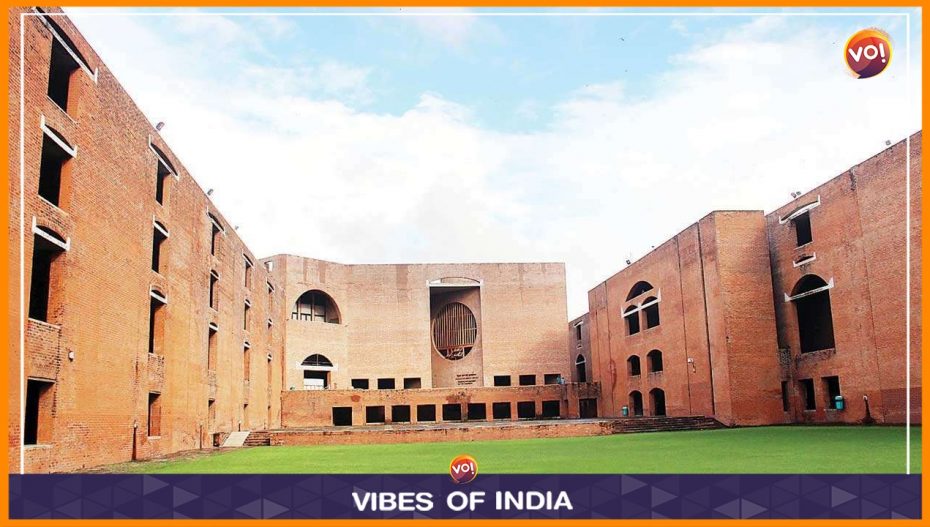William J.R. Curtis, a renowned British architectural historian, has accused the Indian Institute of Management Ahmedabad (IIMA) Board of a lack of transparency in decisions and urged it to “think outside the box rather than skin-deep Americanization.”
“Mercantile concerns are allowed to triumph over human and cultural concerns: this is business today in the era of “disaster capitalism.” Curtis wrote in a letter to IIMA’s director, board of governors, and alumni on Thursday. The letter was written after the board declared on November 3 that it would stop the restoration work on the old campus and start reconstruction instead. The letter was also written to the International Committee for the Documentation and Conservation of Modern Movement Buildings, Sites, and Neighborhoods (DOCOMOMO), the International Council on Monuments and Sites (ICOMOS), the International Committee of Architectural Critics (CICA), the International Conference on Architectural Quality (ICAQ), and the World Monuments Fund.
Curtis stated that “there is a lack of transparency in these decisions,” referring to the latest structural report by the Indian Institute of Technology (IIT) Roorkie, which IIMA director Prof. Errol D’Souza cited as the “major deciding factor” behind the decision. A report was prepared by a team of engineers from IIT Roorkee, but the IIMA administration has refused to make it public. American architects made the assessment, but they have refused to reveal their opinions or even their identities. Why is there so much secrecy? Naturally, there is concern about a ‘whitewash.'”
On November 3, D’Souza announced, nearly two years after IIMA faced strong opposition from various communities, including the children of famous American architect Louis Kahn, for its decision to demolish dormitories on its old campus, that the institute would discontinue restoration and begin reconstruction work, thus preserving Kahn’s legacy.
“So here we are, two years later, defending Kahn’s magisterial city of learning at the IIMA against the institution’s short-term interests.” The letter continued, “In fact, as temporary residents of a universal masterpiece, the administrators bear long-term responsibilities as custodians of a legacy that should be passed down with pride to future generations.”
The recent IIMA announcement, according to Curtis, “makes for curious reading,” and “visionary Vikram Sarabhai, who was the main force behind the foundation, must be turning in his grave.” “One does not want to fossilize Kahn’s scheme, but one does need to respect its essential qualities, attributes, and guiding principles,” he said. “The challenge here is creative reuse, but in a way that preserves the original’s integrity, rather than the wasteful destruction of a masterpiece replaced by a third-rate pastiche.”
However, Curtis accused the BJP government of attacking secular values and Nehruvian social projects, saying that under the regime, smash-and-grab capitalism has flourished combined with an anti-secular, anti-democratic Hindu nationalism. Modern architecture is associated with the Nehru period and with secular values, and Nehruvian social projects come under attack.
Adding that this is the deliberate destruction of cultural memory to suit a political agenda and to bend to commercial greed, he said, “Some years back, moves were made to demolish Le Corbusier’s Millowner’s Association Building in Ahmedabad and to “develop” the plot of land for profit. “The price of everything and the value of nothing; that is the new India under a plutocracy and global capitalism.”
“Why be restricted to the modern era?” Why not shift the axes at Fatehpur Sikri to suit some contemporary whim? Why not move the ceremonial lingam in the sublime Elephanta Cave to make it easier for tourists to see it on arrival? “Why not play with the Taj Mahal a little?” Curtis asked, adding that IIMA will be the future Fatehpur Sikri and should be preserved in its entirety as part of Indian and global patrimony
He said the IIMA should be given the status of “universal patrimony of humanity” under UNESCO protection. He suggested continuing to restore the structures while intelligently and sensitively adapting them to present and future needs.
“It would be tragic if Kahn’s great work was destroyed when it could easily be restored and refurbished.” “It is so rare to find the architecture of this level in any period or place in the history of architecture,” he states.
Also Read: Gujarat BJP Goes to Poll Battle with Winnability as Main Mantra











